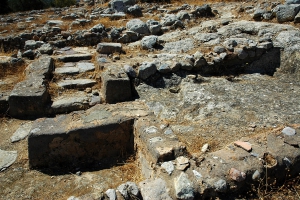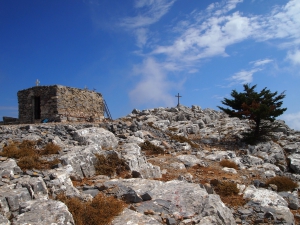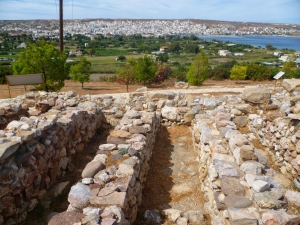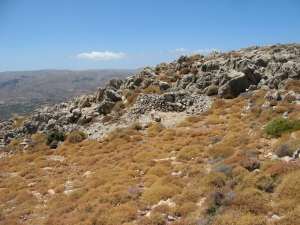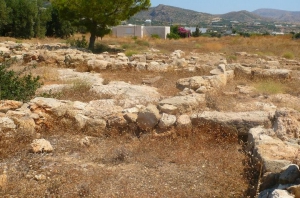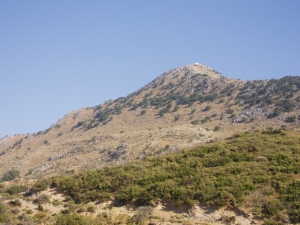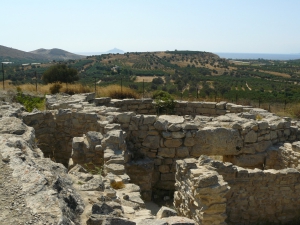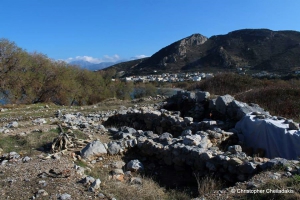The Minoan settlement of Vasiliki is located across the exit of the gorge of Ha and near the Minoan settlement of Gournia, at an elevated point that controlled the valley of Ierapetra.
Kofinas is the highest peak in the wild Asterousia Range with an altitude of 1231m and gets its name from its shape resembles an inverted basket (kofini in Greek). The top, with stunning views to the Libyan Sea, today hosts a temple of the Holy Cross (Timios Stavros), celebrating on September 14.
The Minoan settlement of Petras was built on a low hill near the present city of Sitia. It is believed by many researchers that this was the site of ancient Etea or Etida, from where the sage Myson came from.
Traostalos Peak Sanctuary was first excavated in 1963-1964 under Kostis Davaras. Davaras returned in 1978 to continue that work. A rescue excavation from April to October 1995 was led by Stella Chryssoulaki. Along with the usual clay human and animal figurines common to peak sanctuaries, Traostalos has, notably, a female figure with a swollen leg. Other finds at Traostalos include ceramic boats and stone altars.
The very quiet area of Makrigialos with the plain and the sheltered beach could not be ignored by the Minoans, who left important traces of habitation. The main finding is a rural mansion, a miniature Minoan palace in position Plakakia, found in 1971 by Kostas Davaras.
At the position that is currently the chapel of Agio Pnevma (Holy Spirit) at the summit of Mount Vrysinas (altitude 858m) the archaeologists have identified probably the most important Minoan Peak Sanctuary of West Crete. From this point one can overlook the northern coast and the province of Agios Vasilios.
At position Grigori Peak by Kamilari we meet the ruins of alarge domed tomb (34m long perimeter) with panoramic sea views. The tomb was discovered in 1959 by the Italian archaeologist Doro Levi, and dates back from 2000 BC.
Priniatikos Pirgos is a small peninsula that separates the two beaches of Agios Panteleimon Karavostasis upon which an important Minoan settlement has been identified. The settlement has been mapped by the American and Irish Archaeological School. It was inhabited from the Minoan till the Ottoman Era and was highly depended on its harbor. Important findings are kilns for ceramics production.











